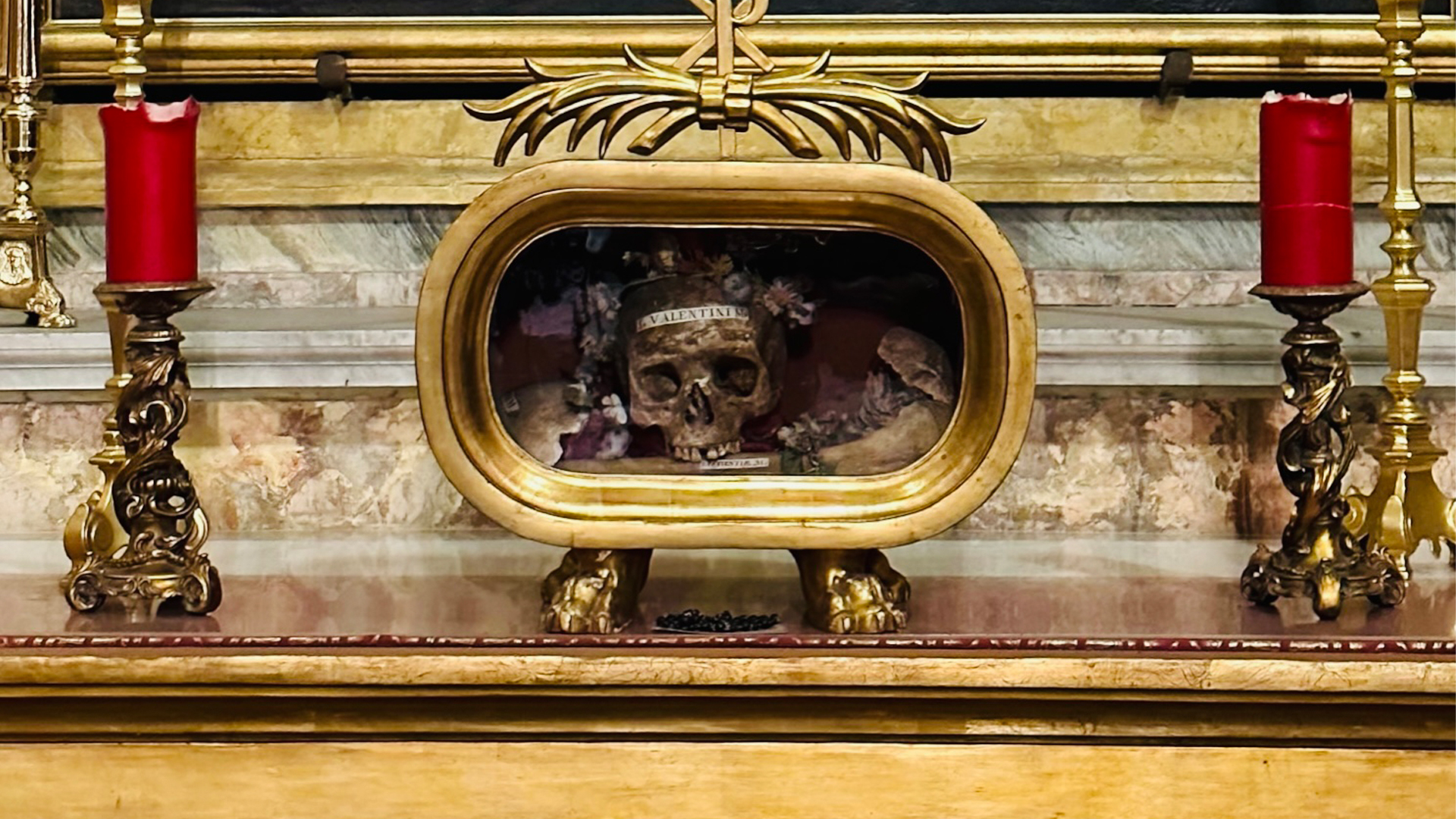Believe it or not, St. Valentine was a real historical figure. But, the details of his life and martyrdom, as well as the origins of his namesake holiday, are all shrouded in mystery. Who was this saint, and why do we celebrate him annually on February 14? Below are five surprising facts about the Roman saint whose name has become synonymous with lovers and romance.
St. Valentine may have been two people
St. Valentine is recognized by the Roman Catholic Church as a real person who died sometime around the end of the third century AD. There are conflicting reports on the historical figure. Some accounts indicate that the St. Valentine we celebrate today may have actually been two separate people.
Some accounts evidence that he was a Roman priest who was beheaded by emperor Claudius II for secretly wedding Christian couples. Other reports say he was the bishop of the Umbrian city of Terni, who was also martyred by emperor Claudius II. While the similarities in the narratives indicate that they might have been the same person, St. Valentine was nonetheless removed from the General Roman Calendar in 1969 because of this conflicting information. He’s still a recognized saint of the church.
He’s the patron saint of lovers, beekeepers, and epilepsy
It’s no surprise that St. Valentine is the patron saint of lovers, engaged couples, and happy marriages. He’s also known for watching over beekeepers and those who suffer from epilepsy. People can also call on him for interventions regarding fainting, the plague, and traveling. A true jack of all trades!
Valentine’s skull is on display in Rome

(Photo Credit: Annie Ojile)
In both accounts regarding the saint, he was martyred by the emperor on the outskirts of Rome. His skull, adorned in a wreath of flowers, is on display in a small glass case in Rome’s Basilica di Santa Maria in Cosmedin. It's one of the many European churches that claim to house his remains. Churches in Poland, Ireland, the Czech Republic, Scotland, and France all claim to have his skull and other bits and pieces of his body.
There are dozens of St. Valentine’s out there
The name Valentine derives from the Latin word “valens.” It means healthy, strong, or powerful. The moniker was a popular one between the second and eighth centuries AD. So, there are several martyrs bearing the same name. St. Valentine, the patron saint of lovers and more, is officially known as St. Valentine of Rome in order to distinguish him from the dozens of others.
Valentine’s Day may actually date to the times of Ancient Rome
Although St. Valentine’s Day is widely believed to be a celebration of the Roman saint, some historians believe the holiday is actually a byproduct of an Ancient Roman festival. The Ancient Romans celebrated the feast of Lupercalia every year on February 15. The pagan festival was a violent and extremely sexual celebration. This celebration included animal sacrifices, matchmaking, and lots of sex in the hopes of warding off evil spirits and infertility.
Animals were sacrificed by priests known as Luperci. After the feast, they cut strips of hide from newly sacrificed goats and ran naked around the Palatine whipping women. This was thought to increase the chances of fertility. Men also supposedly drew women’s names out of jars to be coupled with during the festival. It was up to the couple to decide to stay together until the following year’s festival or to indulge in each other for just one day.
Asia London Palomba
Asia London Palomba is a trilingual freelance journalist from Rome, Italy. In the past, her work on culture, travel, and history has been published in The Boston Globe, Atlas Obscura,The Christian Science Monitor and Grub Street, New York Magazine's food section. In her free time, Asia enjoys traveling home to Italy to spend time with family and friends, drinking Hugo Spritzes, and making her nonna's homemade cavatelli.

